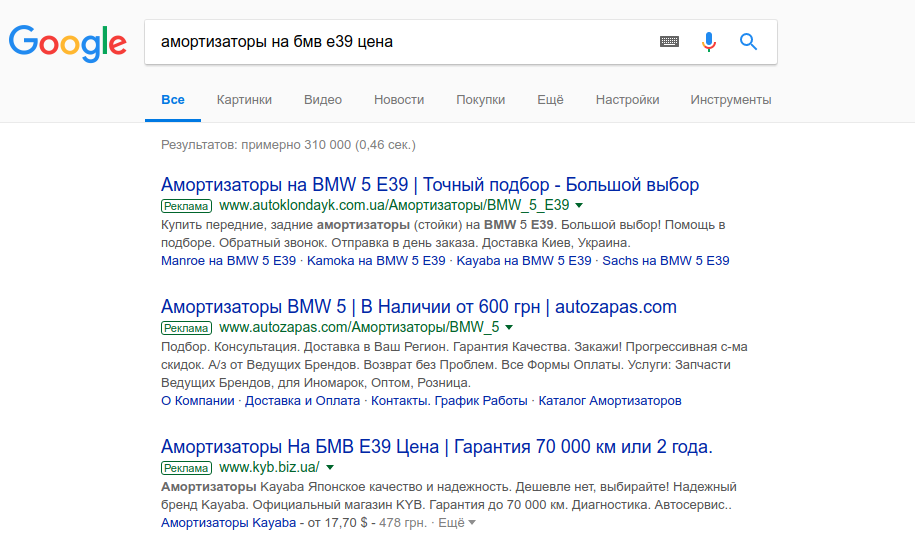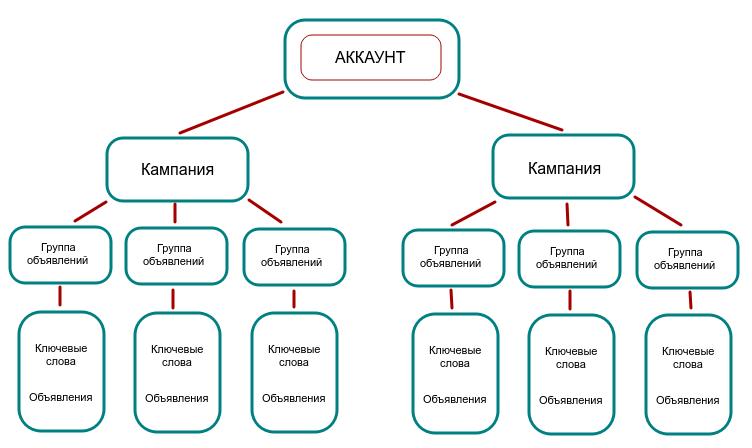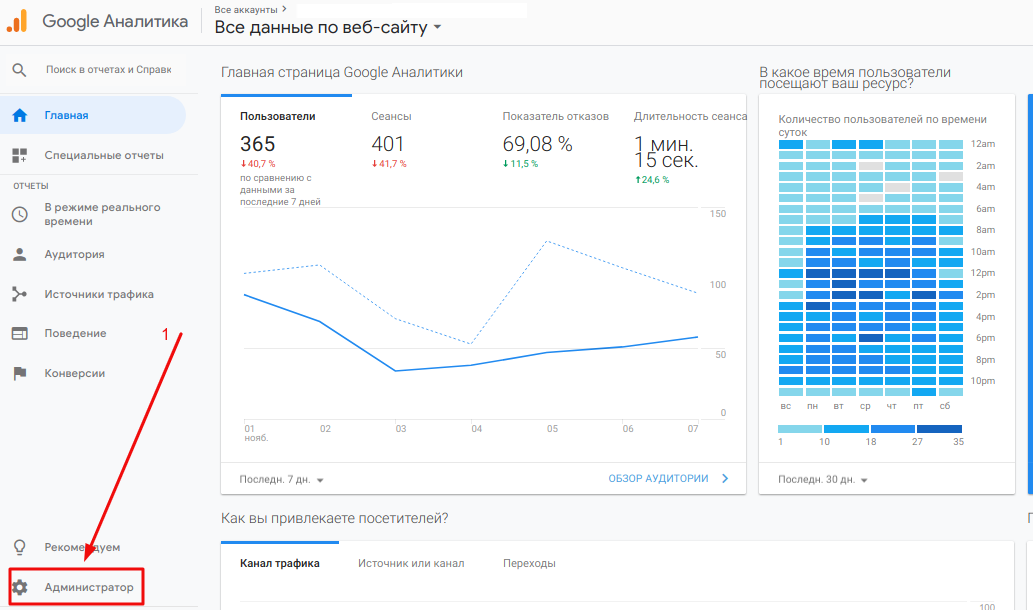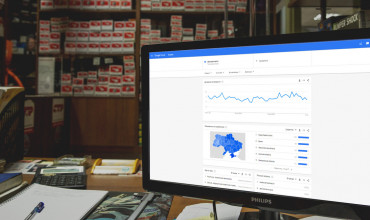
Ads formerly known as AdWords — contextual advertising service from Google. The peculiarity of such advertising is that ads are shown to the user according to the requests that the advertiser has added to his campaign. Flexible advertising campaign settings allow you to display ads at the moment when the user shows interest and, possibly, is ready to buy. Advertising can be search or thematic, pay-per-click or pay-per-impression. Search is displayed above the search results if the user's query matches the keywords of the contextual ad. In this case, the advertiser pays per click — target transition to the site.

Contextual advertising in search results
Thematic — is displayed on the pages of resources included in the Google Partner Network, if the subject of advertising corresponds to the interests of the user. In this case, the advertiser can choose the — pay him for clicks or impressions.

Thematic contextual advertising (remarketing)
The basis for setting up search ads is the keywords that users enter into the search box. More sophisticated technologies are used to set up thematic advertising:
- Contextual targeting: the system displays ads on pages whose content matches the topic of the ad;
- Behavioral technologies: to display relevant ads, the system uses data about the user's behavior on the network and his interests, based on search history, information about previously visited resources, etc.;
- Remarketing: Ads are shown to users who have previously visited your site, added an item to their cart, or taken other actions.
The best option for an online auto parts store is a combination of Search advertising + Remarketing. Search context task — bring the user to the site, the task of remarketing — return it if it hasn't made the purchase. Therefore, it is worth starting an advertising campaign by setting up search contextual advertising with pay per click.

Using search campaigns allows you to attract customers without overpaying. The cost of a call or an order through the basket with adequate settings starts from 5 UAH.

The average cost of an application can be from 13 to 50 UAH:

Landing pages
The landing page — This is the page that a user will land on when they click on your ad. It is important to make sure that its content is relevant to the ad text.
As in the case of SEO for an autosite, the following types of pages can be potential landing pages:
|
Page Type |
Example request |
|
Brand page |
Buy spare parts for BMW |
|
Model Page |
Buy spare parts for BMW X5 |
|
Category page |
Buy shock absorbers |
|
Reverse Fit Model Page |
Buy shock absorbers for BMW X5 |
|
Product page |
OC90 buy |
However, it is important to choose the most effective pages that are able to collect traffic for the most converting keywords.
An analysis of 2,000 AdWords accounts by Disruptive showed that only 6% of keywords are converting. In other words, 19 out of 20 keys drain the budget. Typically, inefficient queries are:
- high-frequency queries that do not have a pronounced commercial component, such as "shock absorbers";
- Commercial high-frequency queries with low conversionher, for example "buy shock absorbers", "shock absorbers price";
- Queries that have two or more values that don't include qualifiers, such as "air filter" (the user may mean both the engine air filter and the air filter for the ventilation or air conditioning system);
- information queries, such as "how to replace shock absorbers on a BMW X5"
- requests without particulars, for example "Kayaba rear shock absorber on BMW X5 (E53) 3.0 2000"
The most effective for an online auto parts store will be model pages and reverse fit model pages. Relevant keywords have low specificity, cost per click fluctuates within 0.01 — $0.10, the conversion reaches 3-5%.
Keywords
Keywords — These are the words and phrases for which your ads will be shown. The more accurately you select the semantics, the more effective your advertising campaign will be.
Don't collect too much
You will get a primary list of queries that you should start from by selecting the categories with the largest assortment and cars for which there are spare parts in your stock and suppliers' price lists.
The following information is required for analysis:
- Total number of products for a single brand;
- Total number of products for a particular model;
- Total number of products in the category;
- Number of products in a particular category for a particular model;
For example:
There are a large number of shock absorbers in your catalog, so we can set up ads on the "Shock absorbers" page
The widest range of shock absorbers for BMW X4, X5, X6 cars, which means we can set up advertising on the pages Shock absorbers for BMW X4, Shock absorbers for BMW X5, Shock absorbers for BMW X6.
At the same time, if there is no assortment of shock absorbers for the BMW Z1 in the catalog, the phrase "shock absorbers for the BMW Z1" won't even make it to the primary list of keywords.
Due to the analysis with which we start setting up ads, you will know that a page with a small assortment or no assortment at all will not be included in the advertising company, and you will not have to pay for ineffective clicks.
Automate your routine
To collect semantics, you can use a tool from Google called Keyword Planner. But, to collect keywords manually — long and not always efficient, especially when it comes to thousands of requests.
To automate the collection of semantics, you can use:
The collected semantics need to be clustered — divided into small groups according to a common feature. Keywords must not be repeated across campaigns and across ad groups. For one ad group, 20-30 unique keywords are enough, each of which includes 2-3 words.
Exclude unnecessary stuff
At the stage of collecting and clustering the semantic core, you need to create a list of negative keywords - words for which your ads should not be shown. A properly compiled list of negative keywords will help show ads only to the target audience. If you do not specify negative keywords, the ad will be shown to uninterested users, which will lead to wasted budget, low CTR, and simply makes the AC ineffective.
For example, negative keywords for the query "Shock absorbers on the BMW X5" can be "installation", "used", "do-it-yourself" etc.
Google Ads account and Campaign setup
Before you start setting up your ads, you need to create an account. Google gives new customers a coupon for 900 UAH, which can be spent on advertising.
Customize your campaigns
Start by choosing your ad campaign type. Available options — search and Content Display Network (CDN), search-only or GDN-only.
By default, your ads will appear on desktop and mobile devices with a full browser, but you can set different bids for each option. Google Ads also allows you to set geotar parametersGeting in your location settings so that your ads are shown only to users in certain regions.
One of the key — budget and rates. You must decide whether you want to pay for clicks or impressions, set bids manually, or automate the process. Budget — the figure is not constant, its size depends only on how much you are willing to spend on advertising. Serpstat tools will help you determine the average cost per click and competition for selected keywords.
Structure properly
Account structure includes campaigns and ad groups. This is where the “general to specific” rule comes into play: keywords and ads are included in ad groups, which in turn are included in the campaign. One account can contain several campaigns.

Ad account structure
The better you organize your account structure, the easier it will be to manage a large number of ads. The keywords that you place within the same ad group must be related by topic, and the ad text — relevant to any key from this group.
You can organize campaigns based on product category, brand or car model.
For example, the shock absorbers campaign may contain groups "Shock absorbers for BMW X4", "Shock absorbers for BMW X5", "Shock absorbers for BMW X6".
Ad text and extensions
The task of declaring — grab the user's attention and make them go to your site. But, given the high competition in auto parts, this is not so easy.
Use keywords
Try to use as many keywords as possible in your ad title and body. This will increase its relevance to user requests, improve positions and reduce the cost of a click.
Using the same ad text for different queries is not only inefficient, but also expensive.
Stand out
Try to make your listing stand out by listing significant benefits, shipping times and prices, and using calls to action. However, do not abuse exclamation marks, do not write in CAPITAL LETTERS, unless we are talking about abbreviations and abbreviations — neither Google nor the user will approve such an ad.
Use extensions. They allow you to provide the client with more information about the product, make the ad more visible and attractive, which will certainly increase the click-through rate and reduce the cost of a click. The list of available extensions includes: sitelinks, location, mobile apps, testimonials, "call" link.
Experiment
Compose multiple variations of ads for the same query to find out which text works best. Conduct A/B tests: change titles and extensions, test query performance in different regions. Analyze the results and improve the effectiveness of campaigns.
Analytics and efficiency
It is very important to track traffic received from advertising channels. By analyzing the quality, you can adjust bids in time, draw conclusions about tests, turn off ineffective campaigns and increase the budget of effective ones.
Link your Google Ads and Google Analytics accounts
To track traffic from contextual advertising, you need to link your Google Ads and Google Analytics accounts. For this:
1. Go to your Google Analytics account and select "Administrator"

2. Navigate to the "Resource" column and select Link to Google Ads

3. Click "Add Account"
Tag URLs
For the most accurate Google Ads traffic data, mark campaign URLs with UTM tags using URL Builder, or using automatic tagging available in your Ads account.
Context advertising for an online auto parts store — it's not fast, it's not easy, and it's not always cheap. But if properly configured, an advertising campaign can bring dozens of customers.
If you need help setting up contextual advertising for an online auto parts store, write or call us!


